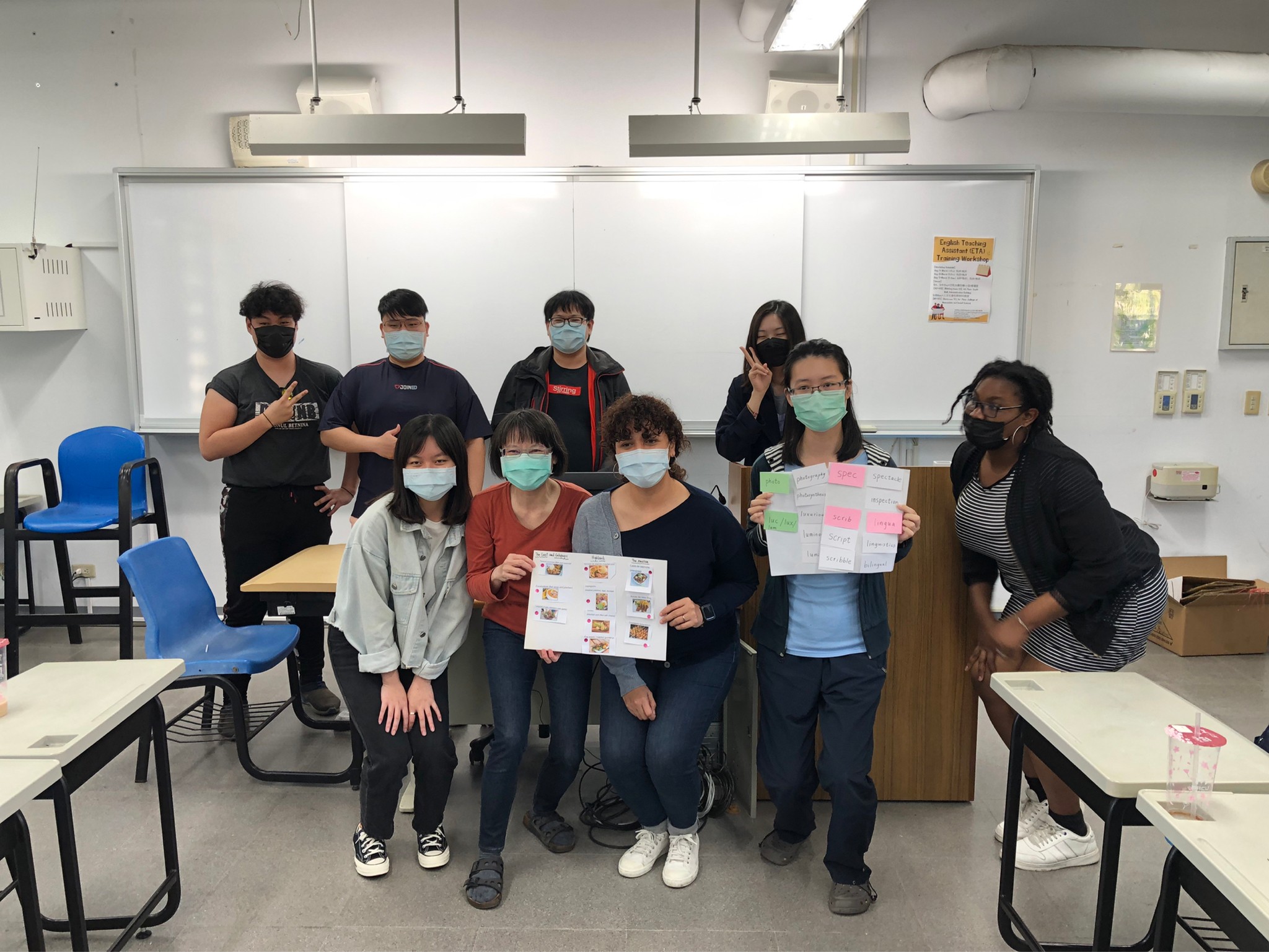Abstract
The Center for English Teaching and Learning Resources of the National University of Kaohsiung (hereinafter referred to as CETLR, NUK) has integrated the existing administrative and teaching resources to establish a comprehensive on-campus EMI support system progressively to promote featured EMI courses and cultivate bilingual talents. The characteristics and highlights of the results are as follows.
1. Constructing an EMI teaching support system and building a bilingual campus (campus side)
- Coordinate and integrate all Academic units (faculties, departments, and the General Education Center) and administrative units (Division of Academic Affairs and Office of International Affairs) to promote the development of English language teaching and EMI curriculum improvement programs.
- Build a shared database of EMI materials on campus to strengthen the network of English teaching resources for the improvement of English teaching in all areas of study.
- Join cross-campus strategic alliances: NUK is currently a member of the “Southern Regional Resource Center for Bilingual Education”(National Sun Yat-Sen University) and the “National University System of Taiwan”(National Chung Hsing University). The goal of the alliances is to expand academic exchanges and resource sharing in promoting bilingual education in higher education. The services include integration and recognition of teacher communities in each school, regional advisory teacher groups, teaching demonstrations, teacher observation, and cooperation in sharing teaching knowledge and EMI study courses.
2. Promote featured EMI courses of Colleges (College side)
- The EMI Teaching refinement Plan of Colleges: To strengthen the implementation policy of how to teach professional subjects in English, to promote the systematic EMI courses of colleges, workshops, and seminars, and to develop a variety of practical EMI courses. In the 110th academic year, the College of Humanities and Social Sciences, the College of Management, the College of Science, and the College of Engineering participated in this plan and organized a total of 15 seminars, and workshops for students and faculty to promote EMI courses.
3. Build English and Bilingual Teaching Support System (Teacher side)
- EMI teacher training: In the 110th academic year, 16 teachers obtained the EMI professional certification (Cambridge English: Certificate in EMI Skills). This represents 6.84% of our full-time (project) teachers.
- English-taught and Bilingual (English as the primary language of instruction) Courses: In the 110th academic year, NUK offered 80 English courses and 96 bilingual courses, totaling 176 courses. The course offering ratio is 3.50%. The total number of EMI courses for professional subjects is 68, accounting for 2.98% of the total number of courses offered. The total number of General English and General education courses is 12, accounting for 0.52% of the total number of courses offered. To encourage teachers to participate in EMI courses, the 110th academic year funding subsidizes 17 EMI and English-taught courses and doubles the teaching hourly fee for teachers who have obtained the EMI professional certificate.
- Faculty Professional Development Communities for EMI: In the 110th academic year, three communities were established, consisting of 10 faculty members from the College of Humanities and Social Sciences, the College of Law, and the College of Engineering. The communities included International Social Law, EMI courses learning and teaching experience sharing group, and Community for EMI focused Electro-Optic and Materials Technology.
- Teacher Enhancement Seminars and Workshops: The CETLR of NUK organized 2 teacher enhancement workshops. A total of 146 teachers from NUK and other universities in Taiwan attended our EMI Teacher Certification Sharing Session and EMI Teacher Enhancement Workshop.
- EMI Bilingual Sandwich Teaching Module: In the 111th academic year, faculty members will invite experts from the industry, government, and academia to conduct English seminars in conjunction with course topics. Teachers are encouraged to use a ratio of 1/3 full English, 1/3 Chinese, and 1/3 full English lectures to conduct the course to cultivate bilingual talents in professional fields.
4. Enhancement of Student English Learning Support and Certification Mechanism (Student Side)
- In the second semester of the 110th academic year, 80 courses were offered in English. The average score of the student survey was 4.55 out of 5.
- EMI TA Training Workshop: In the second semester of the 110th year, 9 students received certificates and 4 out of 9 joined the EMI courses to assist the teachers.
- English test results of current and graduating students in the 110th semester: 50.6% of freshmen students achieved the CEFR B1 level; 57.35% of our graduates achieved the CEFR B1 level in the external standardized English proficiency test.
- Short-term English for Specific Purposes (ESP) courses: The College of Engineering offered two short-term intensive English courses that focused on listening and speaking skills in the second semester of the 110th year. A total of 15 students participated in the courses. The overall course satisfaction rate was 66.70% and 77.80% of students thought that their oral expression skills had improved.

